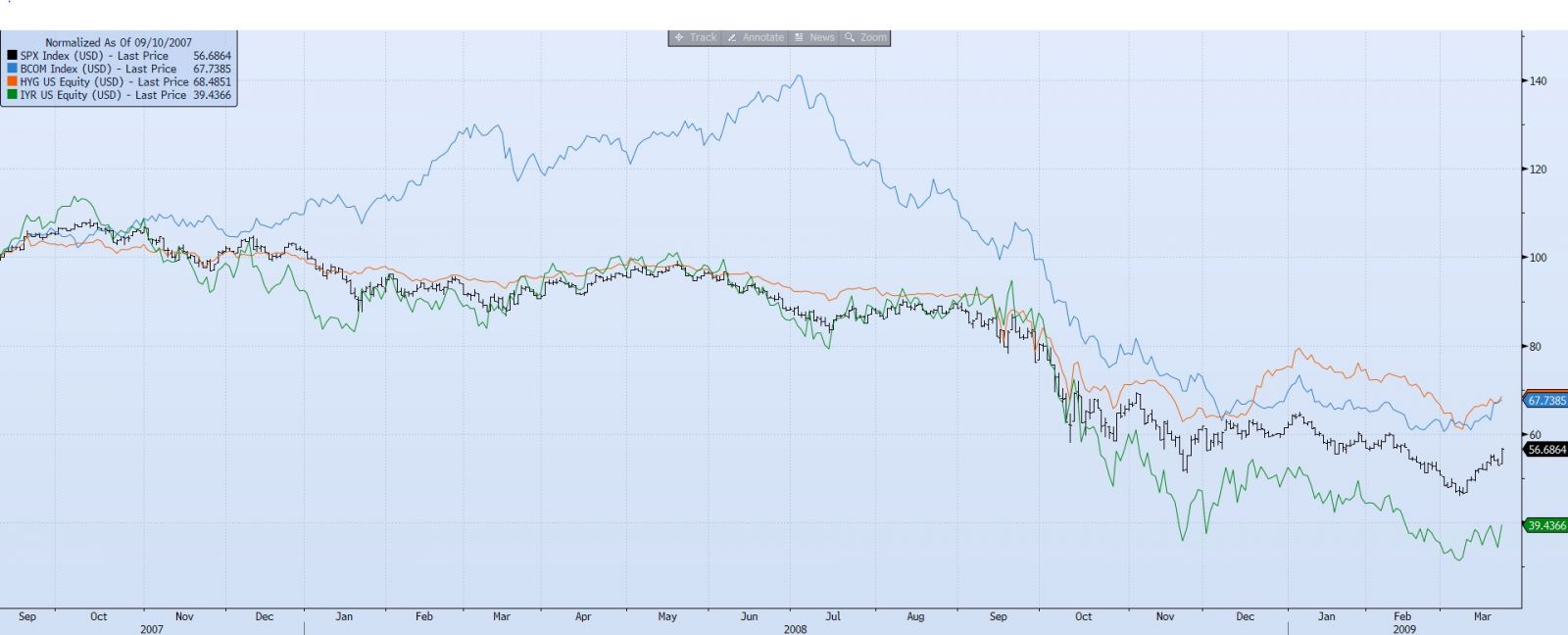Investment Strategies
Family Office Ponders How To Withstand Financial Turmoil

What steps should investors take to cope with a potential new financial crackup? A family office considers the options.
A decade after the global financial crash, which saw venerable banking names implode, massive tax-financed bailouts and attacks on "greedy bankers", the world is still trying to count the costs, and explore the lessons. Whatever else may be thought, one takeaway is that investors have seen what can happen when portfolios sink. With almost ten years of a bull market in equities, buoyed by cheap central bank money, now may be the time to consider whether to take shelter again.
With that in mind, here is an article by Christian Armbruester, founding principal and chief investment officer of Blu Family Office, the European wealth management house that regularly comments in this publication’s pages. As always, while the editors are pleased to share these views and invite readers to respond, they might not agree with all their views. Email tom.burroughes@wealthbriefing.com
What we saw during the last financial crisis, was that there were very few so-called “safe-havens” when it all goes to hell. We had our holdings of equities go down more than 50 per cent, even those that had a low beta or bore little correlation to the markets (before the crash). We also lost money in corporate bonds, even though they are supposed to be negatively correlated to equities. We also saw sharp price drops in real estate, commodities and private equity. So, what can we do to protect ourselves from such a complete wipe-out event, because clearly asset class diversification does not seem to work?
Graph of US equities, real estate, high yield bonds and commodities during the 2008 crash.

Source: Bloomberg
But before we do that, let us first clear up a few semantics, so
that we are all on the same page. For one, holders of illiquid
investments (such as real estate or private equity) may argue,
that as long as you did not have to sell, there was no effect on
the value of the assets. But that is true of everything, even
equities. As a matter of fact, if you had held on to your
equities and just ignored the crisis all together, you would be
up more than 200 per cent in US stock market gains. But that
doesn’t mean they weren’t down 50 per cent at some point. And
isn’t the whole point of marking your assets to their true value,
so that you can perform sound risk management or capital
allocation decisions? It truly has to be one of the dumbest
things I have ever heard: “Ah yes, in private equity we have no
volatility, because the NAV only changes when we have cash
disbursements”. Absolutely, sticking your head in the sand has
always been the best way to protect yourself.
Two, correlations don’t go to one. Correlation depends on the period of time you are looking at and short-, medium- or long-term correlation can be completely different, accordingly. And just because they sometimes move together, doesn’t mean they will stay that way forever. Correlations are a measure of the way assets move relative to one another. In fact, the only way for correlations to ever become one is if all the markets go up or down in a straight line. Given the utterly chaotic state of the volatility markets during 2008, it seems almost idiotic to suggest that everything went the same way, because then of course there would be no volatility. And a case in point, some currencies (including gold), government bonds and many trading strategies, including CTAs [commodity trading advisors] and even (long) volatility strategies, all went up and some actually made a fortune on the day.
Now that we have cleared up these common misperceptions, let us move forward and try to understand what really happens when we have an adverse market event. You see, it all comes down to risk and clearly if you have all of your investments in the same form of risk, it is inevitable that you will lose big if some crisis or event affects your particular type of risk more than others.
Going back to our example of equities, real estate, commodities, and private equity, all of them bear the same risk, e.g. absolute price risk, in as much as you are buying these assets at a certain price and the risk is that this price goes down. And here you will find very little diversification from one asset to the other and all of these investments will go down in value in a market crash.
Are there other forms of risk? Of course, and this is where the world of alternatives can truly shine and give us plenty of options to diversify our risk exposure. For one, there is relative price risk and within this category we find any relative value, long/short or market neutral strategy. The trick is not to confuse these strategies with the previously discussed category of absolute price risk, which means, we have to make sure they are truly market neutral (but that is the discussion of another post). There is also specific price risk, found in event-driven CTAs or venture-based strategies. Here, your bet is on a specific situation or price, which does or does not occur. Very importantly, these situations have as little in common with the broader market as the outcome of a football match, an election or a merger.
Also within the credit space, there is more to lending than just giving your money to the government (which did act as a safe haven during the crisis, by the way, but there is no guarantee that will be the case when the next crisis hits – potentially stemming from governments defaulting, but again that is the topic of another post). There is project finance, bridge financing, infrastructure lending, trade finance, asset backed leasing – all of them utterly and completely unaffected by the events of 2008. Life simply went on, businesses continued to sell goods, people continued to fly around the world and families continued to feed their children.
And that’s the thing about crashes and tail risks: as much as there is very little you can do to prevent them from happening or try to time when they will next come about, there is quite a bit you can do after they occur. As long as you have diversified into different types of credit and price risk, you will have a field day when you rebalance your portfolio and sell some of the things that have gone up and buy those that have gone down a lot. Oh and one last thing, if you are so convinced that the world as we know it is going to end, then please stop trying to diversify your portfolio and start growing your own vegetables.
